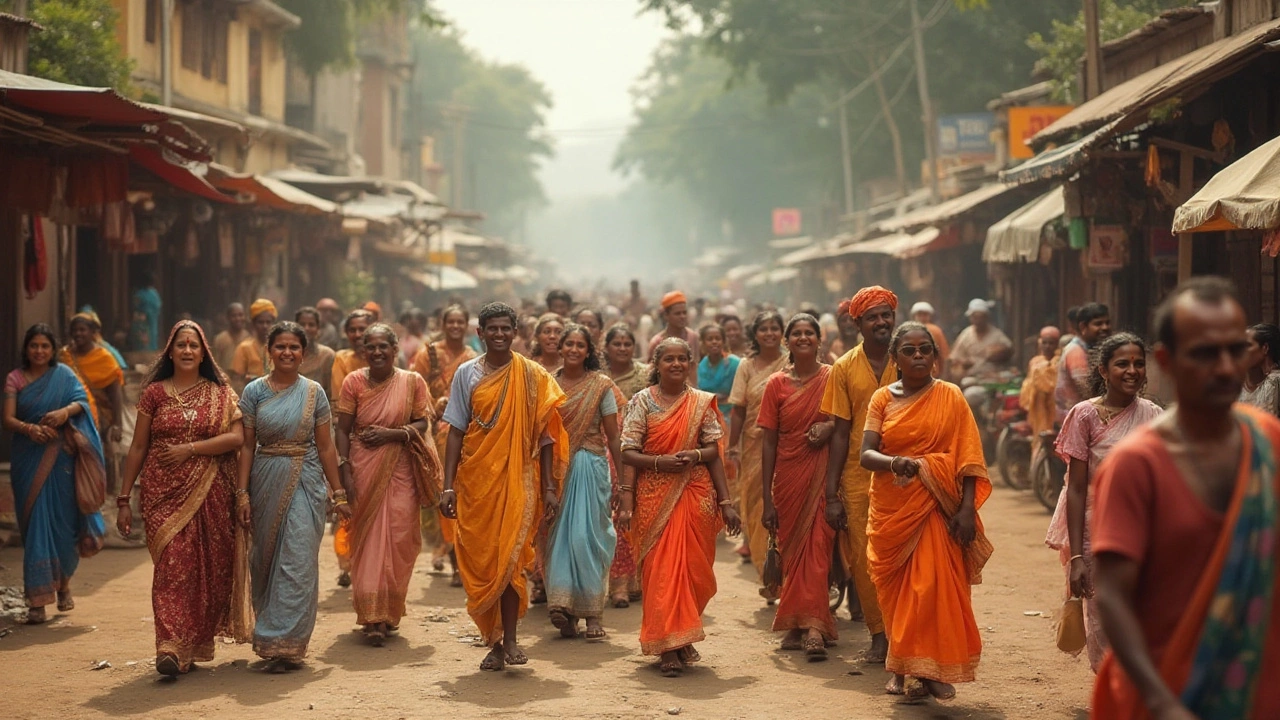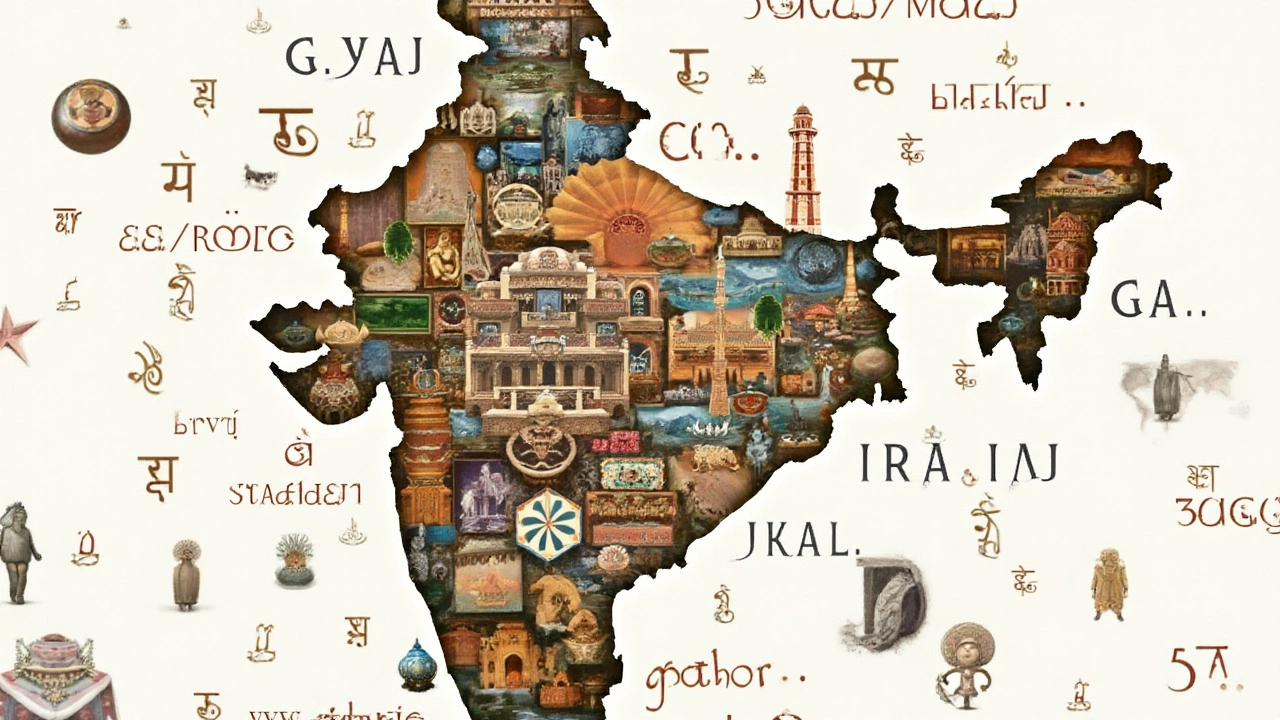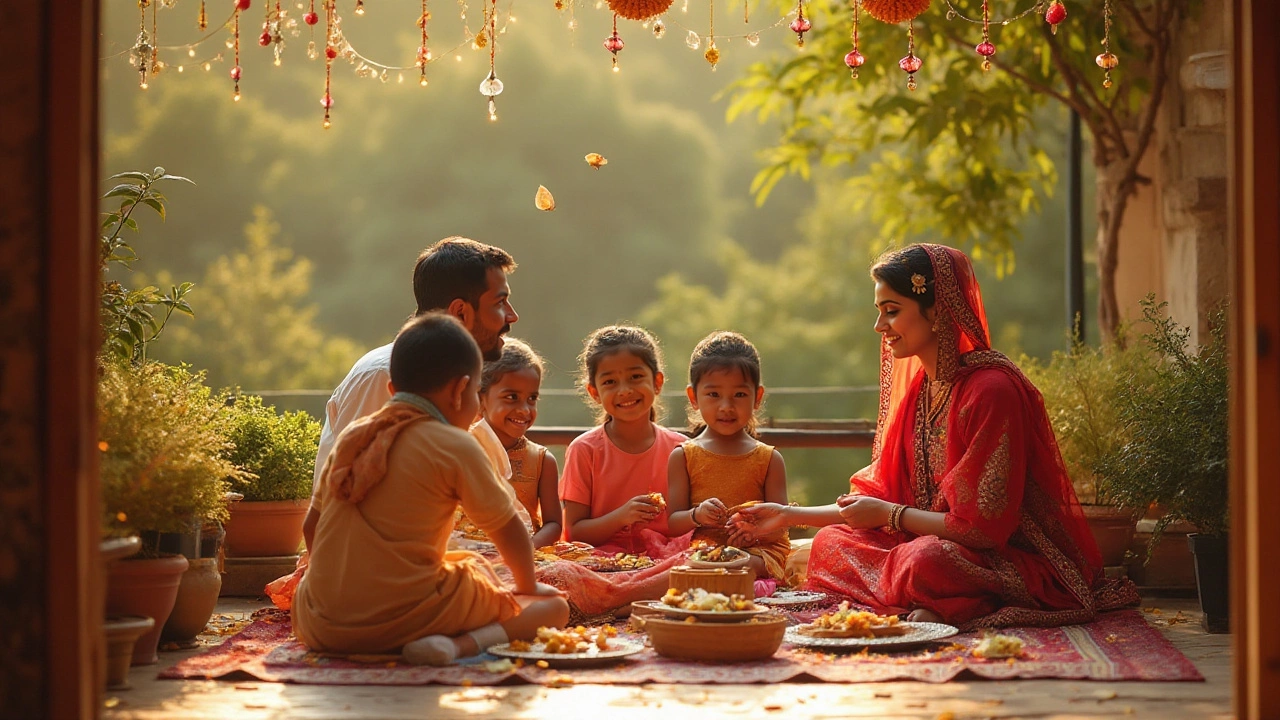Understanding India's Diversity: Quotes That Inspire Unity
 Jan, 1 2025
Jan, 1 2025
India, a nation of vibrant colors and myriad traditions, stands as a testament to unity in diversity. With its kaleidoscope of cultures, languages, and religions, the country exemplifies how diverse elements can come together to form a harmonious whole. Discovering India’s diversity through quotes not only enriches our understanding of its rich heritage but also provides inspiration for fostering inclusivity in our lives.
Throughout history, India has been a crucible of customs, where every region contributes to a larger cultural mosaic. This diversity is often captured through profound quotes by leaders, thinkers, and everyday people who draw wisdom from the varied landscapes and traditions.
Explore how some wise words highlight the beauty of diversity and delve into why embracing different perspectives is crucial for a united future. These reflections can guide us in our journey to appreciate differences, celebrate uniqueness, and build communities that thrive on mutual respect and understanding.
- The Essence of Diversity in India
- Quotes Celebrating India's Cultural Heritage
- Inspirational Thoughts on Unity in Diversity
- Lessons from Diversity for Daily Life
- Embracing Diversity for a Better Future
The Essence of Diversity in India
India's diversity is not just about different food, languages, or attire, but it's a deeper blend of histories that have intermingled over centuries. This rich tapestry is woven from the interactions of numerous ethnic groups, each contributing unique elements that make India so intricate yet unified. The colorful streets during festivals, the multitude of tongues heard in a busy marketplace, and the varied customs that change from one region to another are all testament to this incredible diversity. The influence of many rulers in the past, like the Mauryas, Mughals, and British, has left traces across the nation, enriching its culture while also challenging it to preserve its indigenous roots.
One notable aspect of India's diversity is its linguistic variety. India harbors 22 officially recognized languages and thousands of dialects, each adding its own texture to the national mosaic. The Indian Constitution has acknowledged this pluralism, ensuring rights of communication and education in these languages, thus embracing diversity as a fundamental aspect of national identity. This linguistic treasure makes India a paradise for linguists, as everyday conversations turn into a symphony of diverse sounds. Education in multiple languages is encouraged, ensuring children grow up appreciating different cultures and traditions from a young age, fostering a sense of unity in diversity.
The spiritual and religious diversity of India is another cornerstone. Home to Hinduism, Buddhism, Jainism, and Sikhism, alongside Islam, Christianity, and Zoroastrianism, India stands as a beacon of religious harmony and coexistence. Despite the challenges, such as occasional sectarian tensions, the country often showcases vibrant examples of communities living in mutual respect. The same streets can echo with the call to prayer from a mosque and the ringing bells of a temple, demonstrating that respectful coexistence is indeed possible. Mahatma Gandhi once said, "Our ability to reach unity in diversity will be the beauty and the test of our civilization."
Not only are there geographic and cultural diversities, but economic differences also paint various pictures across the country. From the bustling cities, serving as hubs of IT and economic development, to rural villages, where traditions dominate daily life, the economic diversity of India is quite pronounced. This has led to innovative solutions to bridge the urban-rural divide, with initiatives aimed at rural development supplementing the growth in metropolitan areas. The government and organizations continuously work towards inclusive growth, ensuring every citizen benefits from the nation's progress.
India's diversity is one of its biggest strengths and simultaneously one of its most significant challenges. It's about looking beyond the surface and understanding that beneath the differences, there’s a shared humanity. As people travel across this vast land, they often witness first-hand how diversity enhances life's experiences and teaches essential lessons about coexistence. Each part of India tells a different story, one that contributes to a grand narrative of resilience, innovation, and an undying spirit of unity. This narrative is not just confined to history books but is lived daily by millions, making India's diversity an essential part of its ongoing journey. Understanding and embracing these differences is what defines India, offering the world an example of harmony amid complexity.
Quotes Celebrating India's Cultural Heritage
India's rich cultural heritage stands as a monument to the human spirit, showcasing a blend of traditions that have thrived through centuries. It's a land where history whispers through ancient ruins, and festivals are a vibrant tapestry of joy and reverence. As we journey through India's diversity, we find it epitomized by words that bring forth the beauty and complexity of its cultural fabric. Such quotes often capture the essence of a nation that has learned to dance to the rhythm of its multifaceted identity.
One powerful quote by Mahatma Gandhi highlights the significance of India's pluralism: "Our ability to reach unity in diversity will be the beauty and the test of our civilization." This belief emphasizes that diversity is not just a condition but a destination where harmony is achieved despite differences. It's a reminder that the strength of this nation lies in its ability to integrate various cultural strands into a cohesive and united whole.
The literary world, too, has celebrated India's cultural panorama. From Rabindranath Tagore's poetry that sings the glory of its landscapes and humanity to the profound narratives of R.K. Narayan that bring alive the essence of everyday Indian life, literature provides a mirror reflecting the country's widespread allure. Interesting to note is that India's Constitution recognizes 22 languages, a testament to how diverse linguistic cultures have been intertwined into national identity, making India diversity not just a concept but an everyday reality.
"In the richness of our diversity, we find the depth of our democracy." - Shashi Tharoor
Religious festivals are another vital component of India's cultural expression, where every celebration is a colorful ode to the nation's spirit. From Diwali's lights symbolizing the triumph of good over evil to Eid's message of unity and gratitude, these events string together the various communities into a collective celebration of life. The participatory nature of these festivities underscores how cultural heritage is shared among all, nurturing a sense of belonging amidst variety.
Additionally, traditional arts and crafts reflect an ancient legacy that has been carefully nurtured by artisans across generations. From the intricate designs of Madhubani paintings to the timeless elegance of Banarasi silk, each artwork tells a story of its origin, encapsulating local customs and skills. As modern India strides into the future, it carries these legacies forward, ensuring that the uniqueness of its crafts continues to inspire and connect people globally.
Such enduring cultural treasures offer a profound lesson for individuals and societies worldwide. The quotes and stories that celebrate India's cultural richness guide us to appreciate our differences as sources of strength. They remind us that diversity is not merely a state of being, but a resource for personal and collective growth, an opportunity to learn from one another, and to create a brighter, more inclusive future for all.

Inspirational Thoughts on Unity in Diversity
India's heartbeat resonates with stories of its incredible diversity, a quality that many have tried to capture in words. The idea of 'Unity in Diversity' isn't merely a slogan but a lived experience for millions. As people across different regions engage with each other through festivals, traditional practices, and shared histories, they encounter an intertwined existence that underscores the true meaning of harmony. This blend of cultures has not only sustained but enriched the Indian society, creating a robust tapestry of human experience. By acknowledging each component's uniqueness, we learn to appreciate the broader spectrum that forms the nation's identity. Every language spoken, every dance performed, every style of cuisine prepared adds a different hue to this fascinating kaleidoscope. To outsiders, it often seems miraculous how these diverse elements blend seamlessly, but for those living through it, this synthesis is an everyday reaffirmation of unity.
Philosophers and leaders have long reflected on this rich mosaic of cultures, offering insights into the profound nature of India's diversity. Mahatma Gandhi, the father of the nation, once said that "Our ability to reach unity in diversity will be the beauty and the test of our civilization." These powerful words echo through time, reminding us that true progress is achieved through embracing and understanding differences, rather than denying them. His thoughts underline an important value – the courage to accept and celebrate the varied threads that weave into our personal and collective identities.
Discovering harmony amidst discord is key. Our civilization prides itself on the ability to coexist with mutual respect.
Another influential figure, Jawaharlal Nehru, India's first Prime Minister, emphasized the country's unique ability to forge unity from diversity. He highlighted the inherent strength found not in uniformity, but in the celebration of numerous different cultures, a thought captured beautifully in his writings. By cherishing diversity and channeling it into collaborative efforts, societies can unlock unmatched potential. This harmonious cohabitation offers lessons on patience, tolerance, and the strength found in cooperation. It encourages us to listen and learn from varied cultural narratives, building a bridge to connect us with the broader human family.
The practical applications of these ideals resonate in everyday interactions, where people from different backgrounds live and work together, each contributing their piece to the national puzzle. Festivals like Diwali, Eid, Christmas, and others often serve as social equalizers, bringing people from all walks of life together in celebration. Sharing meals, participating in each other's traditions, and engaging in dialogue help to dissolve barriers, fostering a sense of unity among diverse groups. In workplaces, too, a mix of perspectives and experiences can drive innovation, enhancing productivity while fostering an inclusive environment. As we embrace the diversity around us, we not only enrich our understanding of the world but also nurture a society driven by compassion, empathy, and the spirit of togetherness.
As future challenges emerge, the notion of embracing diversity remains a beacon of hope. Nations worldwide can derive valuable lessons from India's example, learning the art of uniting disparate voices and perspectives. By placing inclusivity at the core of our social fabric, we can constructively address global challenges. This legacy reminds us that our diversity is not merely a statistic but a testament to a collaborative history marked by resilience and growth. The shared wisdom from multiple cultures offers guidance, imbued with respect, and delivered with love, uniting humanity under one world family.
Lessons from Diversity for Daily Life
Incorporating the tapestry of diversity that India offers into modern life is not only enriching but necessary. The very essence of India's diversity teaches us to appreciate differences and embrace uniqueness. This is crucial in everyday interactions, be it personal or professional. For instance, acknowledging distinct perspectives can foster empathy and understanding in workplaces, leading to innovative problem-solving. In personal relationships, recognizing and valuing cultural variances can lead to deeper connections and enriched experiences. By drawing from India’s mosaic of languages, traditions, and customs, individuals learn the significance of patience, tolerance, and adaptability, which are indispensable in our fast-paced lives.
Throughout history, prominent figures have recognized the importance of diversity.
"Our ability to reach unity in diversity will be the beauty and the test of our civilization," noted Mahatma Gandhi, highlighting that true strength lies in unity amidst differences.Applying this wisdom shapes ethical frameworks in daily life, encouraging individuals to celebrate variance instead of resisting it. This mindset nurtures inclusive thinking, aiding communities in growing harmoniously. Diverse settings prompt us to challenge assumptions and develop broader worldviews.
Consider how diversity plays into education and learning. The Indian education system is a melting pot of diverse backgrounds, where students integrate knowledge through a prism of varied perspectives. This interaction breeds a robust learning environment, encouraging analytical thinking and creativity. When learners engage with multicultural curriculums, they are better prepared to operate in global contexts. Schools and workplaces that emphasize diversity are increasingly seen as more dynamic and progressive entities.
The business and economy sectors have started reflecting these ideals significantly. Companies with diverse teams often outperform those with homogenous teams. A mix of cultural, gender, and intellectual diversity offers broader arrays of solutions and addresses a variety of customer needs effectively. According to McKinsey's diversity report, organizations in the top quartile for ethnic diversity are 36% more likely to outperform in profitability compared to those in the bottom quartile. This demonstrates how diversity acts as a catalyst for economic growth and innovation. These metrics are proof of the moral and practical dividends of embracing diversity.
In social settings, drawing lessons from a diverse culture like India allows for richer community-building. Deep-rooted traditions teach the importance of close-knit family structures and social support systems. In today’s disconnected world, taking time to learn from elders or indulging in community festivities enhances social bonds and reduces isolation. Such practices make neighborhoods more welcoming and compassionate. As people become more interconnected, sharing diverse cultural experiences becomes a vital source of learning and joy.

Embracing Diversity for a Better Future
Embracing diversity is not just a pleasant ideal; it is a fundamental necessity for a thriving and harmonious future, especially in a complex socio-cultural landscape like India. With its vast array of traditions, languages, and cultural practices, India offers a unique blueprint for understanding how diversity can be harnessed for progress. One of the most notable aspects of India's diversity lies in its linguistic richness, as there are 22 officially recognized languages and hundreds of dialects spoken across its regions. Such linguistic diversity signifies not just varied methods of communication, but also different ways of thinking and expressing.
In today’s globalized world, understanding and appreciating cultural diversity equips us with broader perspectives and innovative solutions to modern-day problems. The beauty of India's diversity is reflected in its foods, festivals, and faiths, all co-existing and flourishing side by side. Learning from India's rich past and looking ahead to global integration, it becomes evident that embracing diversity can lead to better outcomes in business, education, and governance. When we learn to view diversity as a strength rather than a barrier, we empower ourselves to break down prejudices and stereotypes that hinder societal progress.
Significant insights can be drawn from the way Indians weave diversity into the tapestry of daily life, showcasing examples of peaceful cohabitation and shared celebrations, like Diwali, Eid, and Christmas, where communities come together regardless of their religious backgrounds. Prominent leaders have often highlighted the importance of unity in diversity. For instance, India's first Prime Minister, Pandit Jawaharlal Nehru, once stated, "We live in a wonderful world that is full of beauty, charm, and adventure. There is no end to the adventures we can have if only we seek them with our eyes open." This quote captures the essence of discovering beauty through embracing the unfamiliar and the diverse.
Incorporating diverse perspectives in organizational and governmental policies leads to more comprehensive and effective problem-solving. A dynamic workplace benefits from varied ideas and approaches that come from diverse backgrounds. Emphasizing the importance of India diversity in learning processes can enhance critical thinking and cultivate social harmony from a young age. Practical steps toward a future enriched by diversity include inclusive education, representation in media, and dialogue over division.
Moreover, as the world rapidly advances, the opportunity to connect with diverse cultures, both digitally and physically, becomes easier. Being truly open to diversity enhances empathy, promotes peace, and encourages a sense of belonging among different communities. It's not only an avenue for personal growth but a productive path toward shaping a society that values equality and opportunity for all. By recognizing the strength in expressing and celebrating our differences, we pave the way for a future that is resilient, inclusive, and prosperous.